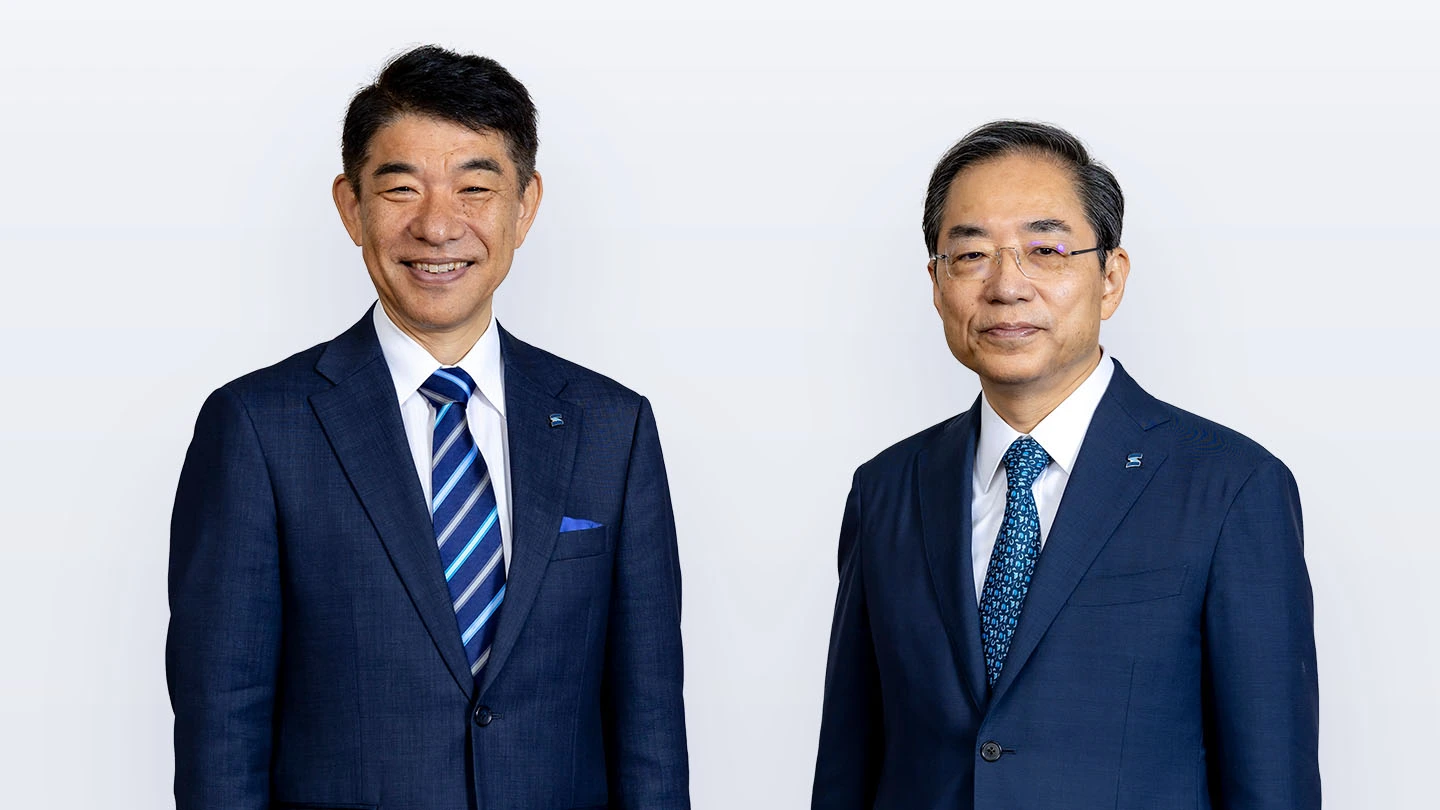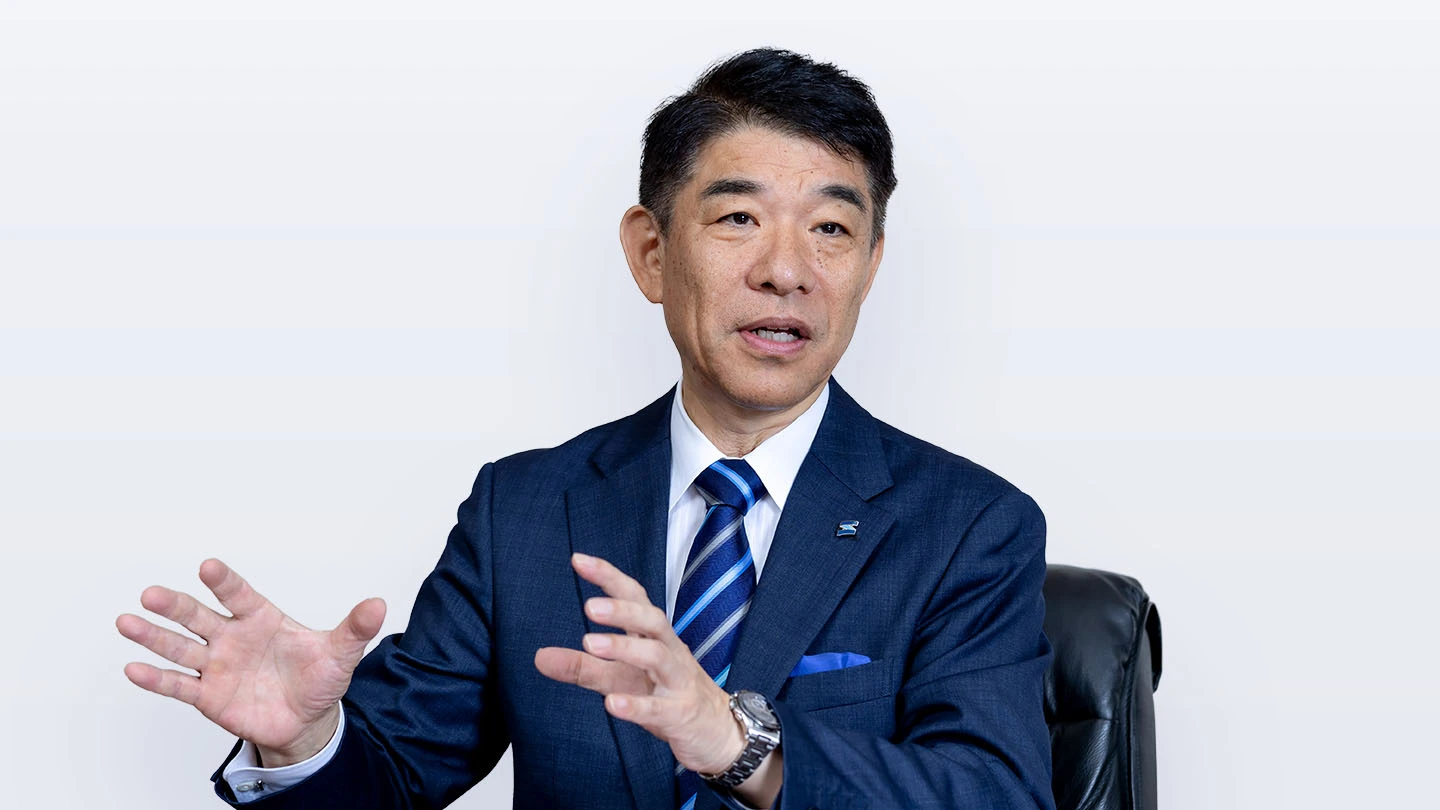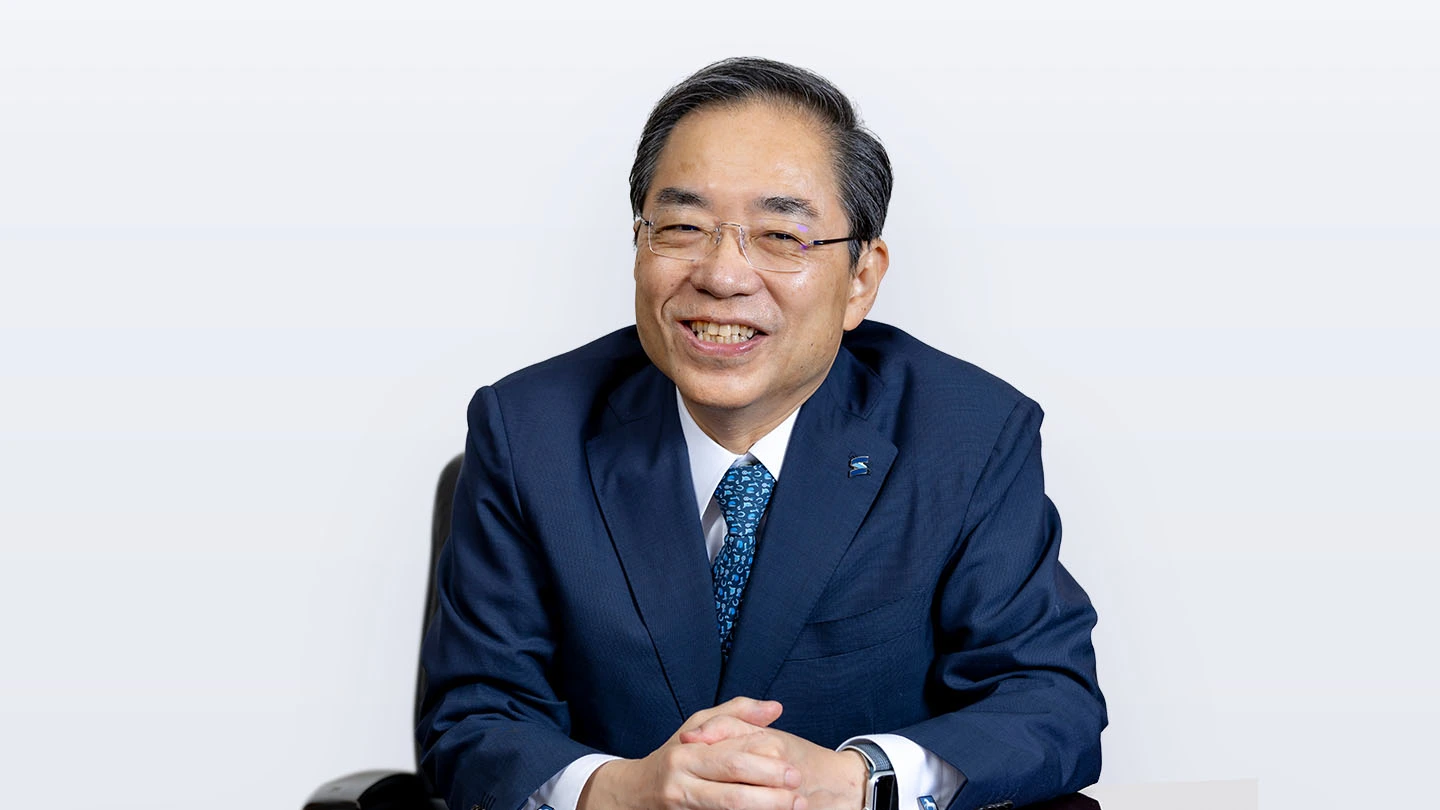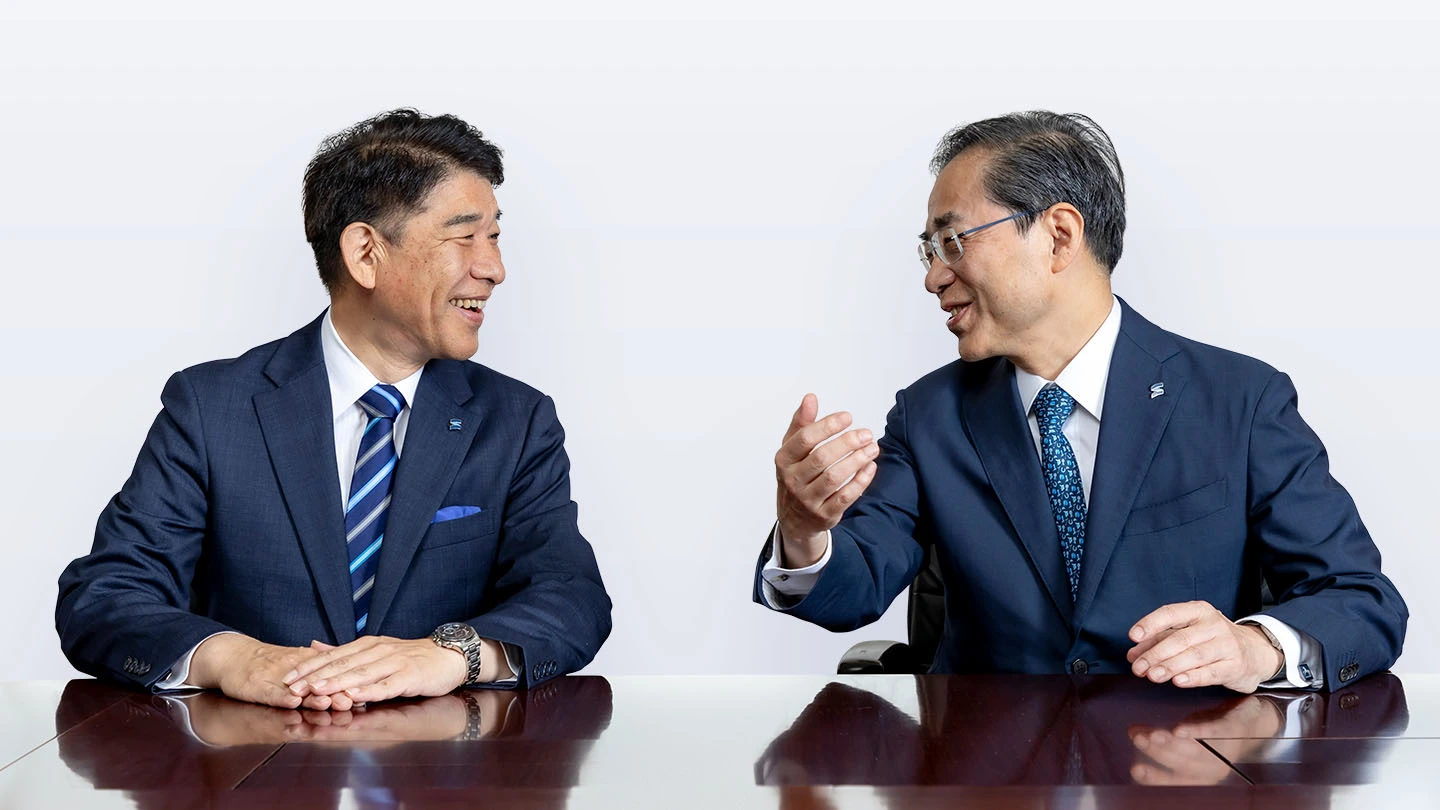Believing in the transformative power of science to create a better, brighter future
Message from Chief Executive Officer and Chief Academic Officer

Naoto Ohtake
President and Chief Executive Officer (CEO), Institute of Science Tokyo
Yujiro Tanaka
President and Chief Academic Officer (CAO), Institute of Science Tokyo
Rising as a world-leading university in science
—Society is undergoing a seismic shift. What role do you think Institute of Science Tokyo (Science Tokyo) is expected to play?
Ohtake
In an age of rapid change characterized by volatility, uncertainty, complexity, and ambiguity (VUCA), Science Tokyo sets sail as a new university with “science” at its core. As we face an uncertain future, we want to have faith in the power of science. Instead of lamenting over an unforeseeable future, we are unleashing the power of science to create a better, brighter future. Our role is to use the power of science to realize a better life, a better society, and a better planet. Science Tokyo is a university that develops and nurtures professionals who embrace this role.
Tanaka
Today, society faces many challenges, such as climate change, natural disasters, poverty, infectious diseases, and international conflicts. Attempts to solve all these problems in today's zero-sum society will lead to inequalities and divisions. That is why we need to change the direction of our society, from zero sum to positive sum. Innovation is paramount to changing the direction of society. Science Tokyo’s mission is to spawn innovations in diverse fields to overcome numerous societal issues.
Ohtake
Our medium-term goal is to become a world-leading university that specializes in science. To achieve our goal, we have defined two tiers of university management, the foundational tier and the original tier. The foundational tier is about building a global-standard governance structure. To realize a high level of diversity, fairness, and inclusiveness for all stakeholders, we will create an environment where everyone is treated equally with respect and empowered to speak up and present proposals. Regarding the original tier, we will continue to promote education and research based on practical science. We will also cooperate with various universities at home and abroad to formulate a world-class research structure. This will help attract many leading researchers to our campuses while we also foster such talents by ourselves.
Tanaka
As the academic head of the organization, my vision is to create an environment where intellect is circulated, exchanged, and mixed among all stakeholders, including faculty, students, medical personnel, technical and administrative staff, as well as university research administrators. That is required to create innovations. To ensure that our innovations make a real contribution to people’s wellbeing, we need to stay connected with society from the early stages of research, listen to what people have to say, and work together. I want Science Tokyo to be a university that is truly open to society.
The CEO formulates the framework for Science Tokyo, while the CAO creates and empowers the organization
— Science Tokyo is the first national university corporation in Japan headed by a CEO and a CAO. How do you define roles and responsibilities between one another?
Ohtake
As the CEO, I will be responsible for managing the national university corporation, while Dr. Tanaka will be responsible for leading education and research. I see a great advantage in separating business management and academics. The CEO can concentrate on the management of Science Tokyo, and can devise simple yet bold initiatives to determine what is needed to create positive impact in society, and what is required to develop talented professionals. Furthermore, having two persons leading the Institute enables us to be more active. One of us can give a keynote speech at an international conference while the other is engaging with the local community or meeting students.

Tanaka
Dr. Ohtake envisions the overall framework for Science Tokyo, while I create and empower the organization. My key values are autonomy and collaboration. Intellect can only be seamlessly circulated and exchanged among stakeholders when each person embraces autonomy and the spirit of collaboration. Science Tokyo will aim to foster the culture of autonomy and collaboration, and we need an organization that promotes such culture. Specifically, we have established three new research institutes in time for the merger in October 2024: the Institute of Integrated Research, which promotes research in various fields; the Institute of Future Science, which is dedicated to innovative research for future society; and the Institute of New Industry Incubation, which consolidates industry-academia collaborations that promotes collaborative research and the development of future human resources.
Convergence science that merges diverse academic fields
— What initial actions will the new university take?
Ohtake
Since Science Tokyo is established by the merger of two universities, our first action is to drive integration throughout the entire organization. We will also strive to create and foster a new culture that is unique to Science Tokyo. Society has high expectations for collaborations between medicine and engineering, so we will work towards achievements in this sphere in the short term. In fact, joint research between researchers in science and engineering and those in medicine and the dental sciences, mainly young people, has already started.
Tanaka
A new facility called the Biomedical Engineering Laboratory (tentative name) will be the hub for medicine-engineering collaboration. It will be on Yushima Campus, where Science Tokyo Hospital is located. Once complete, it will bring science and engineering students and researchers close to a clinical environment. I hope that discoveries from their experience in the clinical environment will lead to new research and study in the medicine-engineering field. We are also working on a mechanism to allow medical and dental students and researchers free access to the science and engineering campus. These are some of our early ideas for accelerating the circulation and exchange of intellect.
Initially, the merger will only mix students from science and engineering, and medical and dental backgrounds. Eventually, science and engineering intellect and medical and dental sciences intellect will converge in each person, which I hope will create researchers who are experienced in all of these fields. There may not be many of these researchers, but I am not concerned about quantity. The people who are fully capable of creating innovations will drastically change our society for the better.
— Synergies created by the convergence of science and engineering with the medical and dental sciences will be the strength of Science Tokyo.
Ohtake
Tokyo Institute of Technology was one of Japan’s top national universities specializing in science and engineering, while Tokyo Medical and Dental University was one of Japan’s leading national universities for medical and dental studies. Both universities have long been engaged in cutting-edge research based on practical science. The merger of these two universities is like building a bridge that connects the summits of two high mountains. We call it “a bridge over two peaks”. “Convergence science” refers to the diverse academic fields that line the bridge over the two peaks.
Tanaka
Another way of phrasing convergence science is “fusion science”. We can apply engineering and medical science to create surgical robots, or science and medicine to develop new drugs. We no longer have to limit this fusion to science and engineering or the medical and dental sciences. There are limitless possibilities for fusion at Science Tokyo. The removal of boundaries that separated these scientific fields encourages free collaboration and unlimited fusion across these fields.

Ohtake
An important point here is that the humanities and social sciences are also essential to convergence science. To give you an example, if we want to relocate to Mars, we need to secure oxygen, water, food, and energy on Mars, but we also need law and philosophy to define a living system for humans. Holistic knowledge of academics is required to create new innovations.
Tanaka
We already have more than 70 talented researchers who specialize in humanities and social sciences in Science Tokyo. We are off to a good start in creating new convergence science and future prospects also look promising.
Developing doctoral students into entrepreneurs, attracting talented researchers from outside Japan
— What are your thoughts on recruiting and developing researchers?
Tanaka
We would like to actively develop and nurture doctoral students who will lead innovation. Today, doctorate holders in Japan have limited opportunities to excel. Moving forward, we will be leveraging our networks with industry to create a framework for developing doctorates with society. International perspectives and startup strategies are particularly important. We will form a comprehensive partnership agreement with highly active universities outside Japan to promote exchange of students and researchers. We will also formulate a system for supporting business startups by doctorates, allowing these doctorates to freely come and go between labs and their startup company.
Ohtake
To recruit talented researchers from overseas, I cannot stress enough the importance of creating the right environment. Science Tokyo already has best practices with Earth-Life Science Institute (ELSI) and World Research Hub Institute (WRHI) that successfully invited world-leading researchers from outside Japan. We will use this experience and expertise to create an inbound system. We have a plan for making sufficient research facilities, equipment, and instruments available at the Institute. Researchers can come to Science Tokyo without worrying about what to bring and get started right away, or they can participate in an experiment for, say, three months out of a year. Either way, we need to provide flexibility for research.
— Finally, can you share your ambitions for the future?
Ohtake
As the CEO of Science Tokyo, I will carry out the three E’s: Energize, Execute and Empower. I will energize the Institute’s stakeholders with vitality, execute my commitments and promises, and empower our team members so they can blossom. The three E’s will always be kept in mind as I lead Science Tokyo with Dr. Tanaka.
Tanaka
I will work closely with Dr. Ohtake to create a university for the new era. In the near future, we will see the birth of some amazing innovations. Keep an eye on Science Tokyo!

Naoto Ohtake
President and Chief Executive Officer (CEO), Institute of Science Tokyo
In 1992, Ohtake earned his doctoral degree in mechanical engineering from Tokyo Institute of Technology (Tokyo Tech). In 2010, he became a professor of the Department of Mechanical Sciences and Engineering, Graduate School of Science and Engineering, Tokyo Tech. In 2022, he was appointed the Director-General of the Institute of Innovative Research, Tokyo Tech. He assumed his current position in October 2024. Ohtake specializes in the fields of functional materials and thin film technology.
Yujiro Tanaka
President and Chief Academic Officer (CAO), Institute of Science Tokyo
In 1985, Tanaka completed the doctoral program at the Graduate School of Medicine, Tokyo Medical and Dental University (TMDU). In 2001, he became a professor of the Department of General Medicine, TMDU Medical Hospital. He was appointed the president of TMDU in 2020. He assumed his current position in October 2024. Tanaka specializes in gastroenterology and medical education.